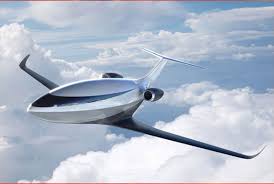In a world where sustainability and innovation are reshaping every industry, aviation is no exception. Among the emerging players leading this transformation, Otto Aviation stands out. The company has captured global attention with its groundbreaking aircraft, the Celera 500L — a sleek, efficient, and futuristic airplane that promises to revolutionize private and commercial flight.
If you’ve ever dreamed of flying faster, farther, and cheaper while minimizing environmental impact, Otto Aviation might just be the future you’ve been waiting for.
What Is Otto Aviation?
Otto Aviation is an American aerospace company focused on transforming the economics and sustainability of air travel. Founded by William Otto Sr., a former aerospace engineer with deep roots in the industry, the company’s mission is simple but ambitious — to make private air travel as accessible and environmentally friendly as possible.
The company is best known for developing the Celera 500L, a revolutionary aircraft designed to cut fuel consumption, reduce emissions, and deliver exceptional performance at a fraction of traditional costs.
The Vision Behind Otto Aviation
At its core, Otto Aviation’s goal is to democratize private flight. Traditional private jets are luxurious but expensive and inefficient. Commercial flights, while affordable, often lack flexibility and comfort. Otto Aviation aims to bridge this gap by designing an aircraft that offers:
Private jet performance
Commercial-level affordability
Reduced environmental footprint
The company’s vision isn’t just about building another airplane — it’s about redefining the economics of air travel entirely.
Introducing the Celera 500L
The centerpiece of Otto Aviation’s innovation is the Celera 500L. This experimental aircraft has drawn attention worldwide for its unconventional design and bold engineering.
Unlike traditional airplanes, the Celera 500L looks like something from the future — sleek, bullet-shaped, and aerodynamically perfect. But its futuristic appearance is more than just aesthetic; every curve and contour serves a purpose.
Key Features of the Celera 500L
| Feature | Description |
|---|---|
| Design | Streamlined fuselage for minimal drag and maximum efficiency |
| Engine | Powered by a RED A03 V12 diesel engine |
| Cruise Speed | Around 460 mph (740 km/h) |
| Range | Up to 4,500 miles (7,200 km) |
| Fuel Efficiency | Up to 8 times better than traditional jets |
| Passenger Capacity | 6 passengers (private aircraft configuration) |
Revolutionary Aerodynamics
The Celera 500L’s design is one of its most distinctive features. Its laminar flow fuselage allows air to move smoothly over the surface, drastically reducing drag. This design improves fuel efficiency and range while maintaining a quiet and comfortable flight experience.
Laminar flow — a smooth, uninterrupted airflow — is difficult to achieve on traditional aircraft due to surface imperfections and design limitations. Otto Aviation’s engineering mastery allows the Celera 500L to maintain laminar flow over a significant portion of its fuselage and wings.
The result?
Less drag, meaning lower fuel consumption.
Longer range without additional fuel tanks.
Reduced emissions, helping to make aviation greener.
Fuel Efficiency: A Game Changer
Fuel efficiency is at the heart of Otto Aviation’s innovation. The company claims the Celera 500L can achieve fuel efficiency levels up to eight times greater than comparable jets.
Where a traditional private jet burns around five miles per gallon, the Celera 500L achieves nearly 25 miles per gallon — an astonishing improvement that translates into lower costs and reduced carbon footprint.
This efficiency allows Otto Aviation to reduce per-passenger costs to levels comparable with commercial airline tickets while maintaining the comfort and privacy of private air travel.
Environmental Impact
The aviation industry contributes significantly to global carbon emissions, and reducing that footprint has become a priority worldwide. Otto Aviation’s approach directly tackles this issue.
By using highly efficient engines and aerodynamic designs, the Celera 500L produces significantly fewer CO₂ emissions per flight compared to traditional aircraft. The aircraft’s design also positions it as a strong candidate for hybrid or fully electric propulsion in the future, aligning with global efforts to decarbonize air travel.
Otto Aviation’s commitment to sustainability makes the company an essential player in the transition toward a greener, cleaner aviation industry.
Comfort Meets Innovation
Efficiency isn’t the only thing that makes the Celera 500L special. Inside, Otto Aviation has prioritized comfort and practicality.
The aircraft’s spacious cabin is designed for six passengers, offering the comfort of a private jet with significantly lower operating costs. Its stand-up height interior allows passengers to move comfortably — a rare feature for aircraft of this size.
This blend of comfort, luxury, and affordability positions Otto Aviation’s aircraft as a strong competitor in the emerging “air mobility” market — catering to both business travelers and leisure flyers.
Advanced Engineering and Technology
Behind Otto Aviation’s success lies cutting-edge technology and a team of experienced engineers. The Celera 500L integrates innovations across multiple disciplines, including:
Aerodynamics: Optimized laminar flow for reduced drag.
Propulsion: A fuel-efficient RED A03 engine that can run on biodiesel.
Lightweight Materials: Advanced composites to minimize weight and enhance strength.
Flight Control Systems: Designed for stability, safety, and reduced pilot workload.
Each element works together to create a next-generation aircraft capable of transforming private and regional air travel.
The Economics of Air Travel Redefined
One of Otto Aviation’s boldest claims is its ability to reduce operating costs by up to 80% compared to traditional jets. This is made possible by:
Lower fuel consumption
Simplified maintenance
Efficient design reducing wear and tear
Optimized flight routes thanks to longer range
This cost-effectiveness could open the door for on-demand air taxi services, regional routes, and affordable private charter options that were previously out of reach for most travelers.
Otto Aviation envisions a future where flying privately isn’t just for the elite — it’s accessible to anyone who values time, comfort, and sustainability.
Potential Markets and Applications
Otto Aviation’s aircraft can serve multiple sectors, including:
Private aviation – for individuals or businesses seeking affordable luxury.
Regional airlines – connecting smaller cities efficiently.
Air taxi and charter services – providing flexible, on-demand air travel.
Cargo transport – using efficiency to reduce logistics costs.
The versatility of the Celera 500L gives Otto Aviation a unique advantage across different markets, from personal use to commercial operations.
Development and Testing
The Celera 500L has been undergoing rigorous testing and certification phases. Initial prototype flights have shown promising results, validating the aircraft’s efficiency and performance claims.
Each successful test flight brings Otto Aviation closer to FAA certification and eventual commercial production. Once certified, the company plans to scale manufacturing and introduce new models, possibly expanding into electric or hybrid versions in the future.
Challenges and Competition
While Otto Aviation’s technology is promising, the road ahead isn’t without challenges. The company faces competition from both established aerospace giants and emerging startups exploring sustainable aviation technologies, including:
Boom Supersonic (supersonic travel)
Eviation (electric aircraft)
Joby Aviation (air mobility and eVTOLs)
Despite the competition, Otto Aviation’s focus on efficiency over speed gives it a unique market position. Its approach prioritizes practicality and affordability — factors likely to drive widespread adoption.
The Future of Otto Aviation
Looking ahead, Otto Aviation’s ambitions extend far beyond a single aircraft. The company aims to build an entire fleet of efficient aircraft, revolutionizing both personal and commercial aviation sectors.
Potential future developments may include:
Hybrid-electric versions of the Celera series.
Larger passenger models for regional airlines.
Integration with urban air mobility networks.
Partnerships with sustainable fuel providers.
If Otto Aviation continues to innovate and deliver on its promises, it could reshape how the world views air travel — making it more sustainable, affordable, and accessible.
Why Otto Aviation Matters
Otto Aviation’s work represents more than just a new airplane. It’s a symbol of what’s possible when innovation meets sustainability.
Here’s why it matters:
Economic impact – Lower travel costs can open new markets.
Environmental progress – Significant emissions reduction potential.
Technological advancement – Sets new standards for aerodynamic efficiency.
Accessibility – Makes private flying a realistic option for more people.
The company’s success could spark a wave of innovation across the aerospace industry, inspiring others to follow its lead toward cleaner and smarter aviation solutions.
Summary: Otto Aviation’s Flight Toward the Future
Otto Aviation isn’t just designing an aircraft — it’s reimagining the future of flight. With the Celera 500L, the company challenges everything we know about aviation efficiency, cost, and design.
Its promise of dramatically lower fuel consumption, reduced emissions, and affordable private travel has already made waves across the aerospace world. While challenges remain, Otto Aviation’s blend of innovation and vision positions it as a pioneer in sustainable air travel.
The future of flight may not belong to the biggest planes or the fastest jets — it may belong to the smartest and most efficient ones, like those from Otto Aviation.
Call to Action
As Otto Aviation continues to test and refine its groundbreaking technology, the world watches closely. Whether you’re an aviation enthusiast, investor, or eco-conscious traveler, now is the time to follow this journey. Otto Aviation’s story is just taking off — and it might change the way we all fly in the years ahead.






Leave a Reply